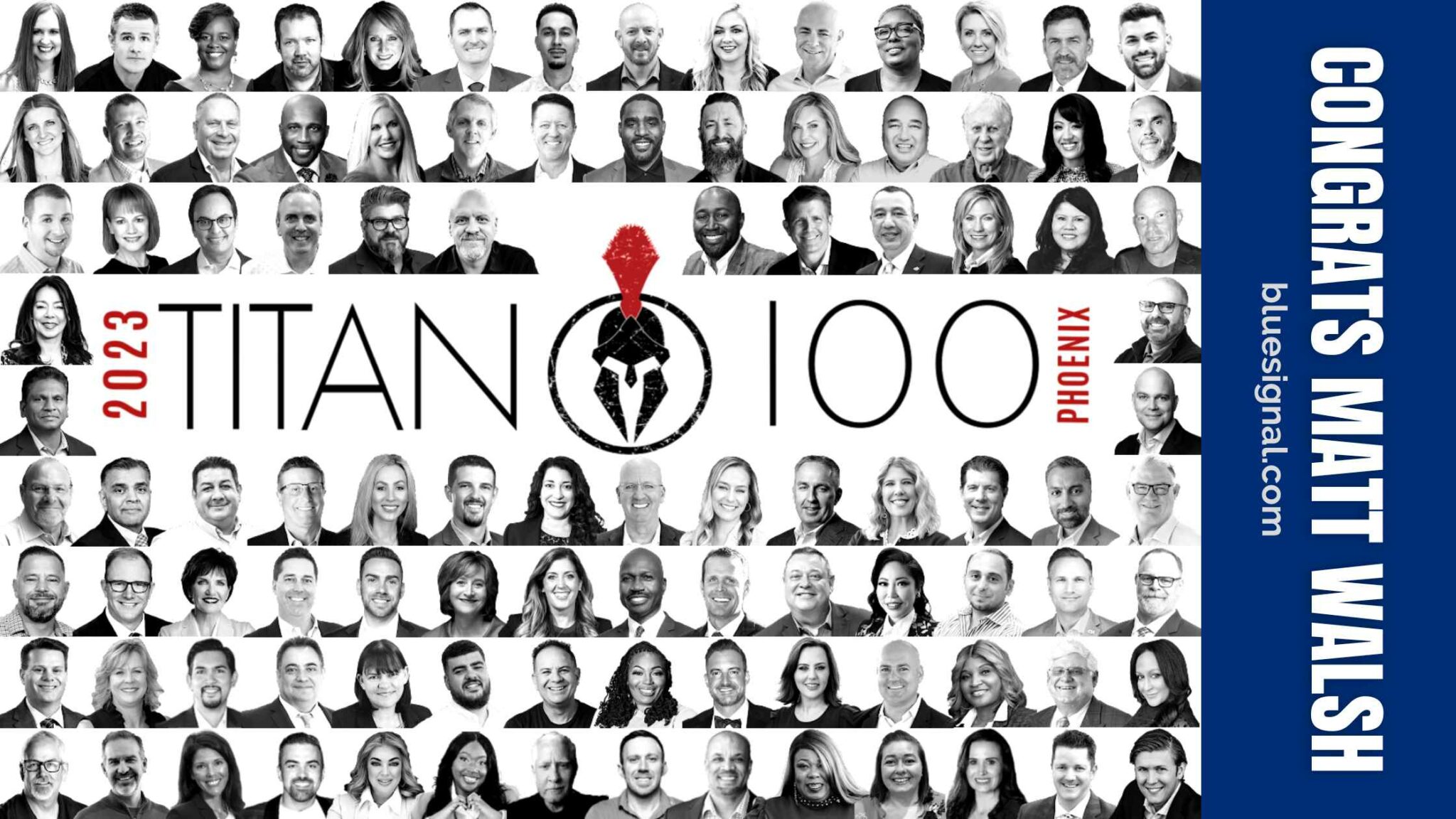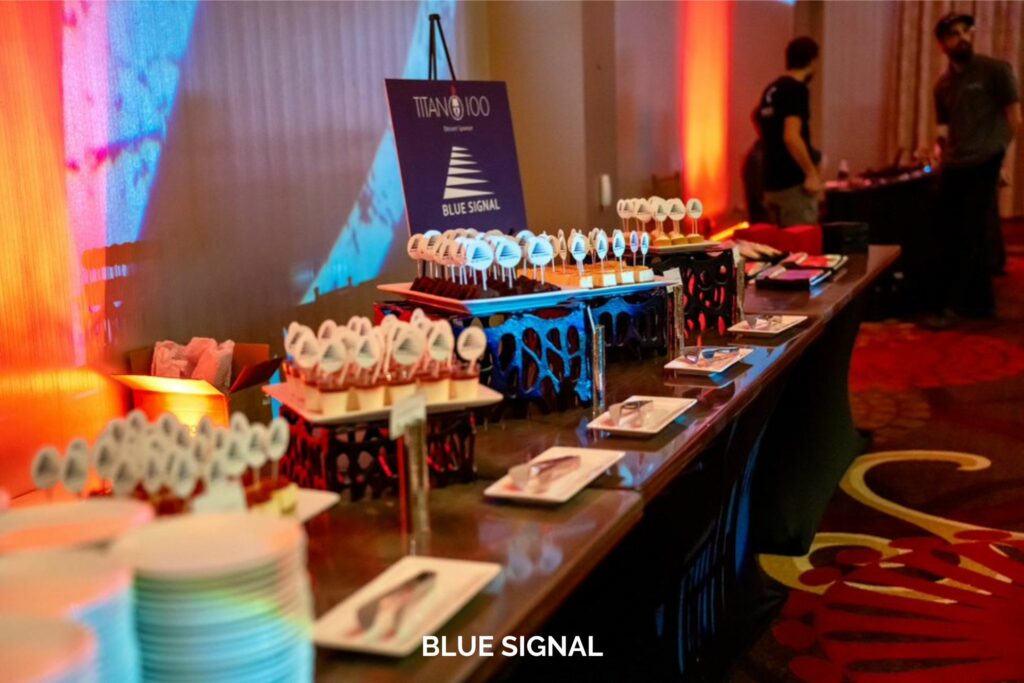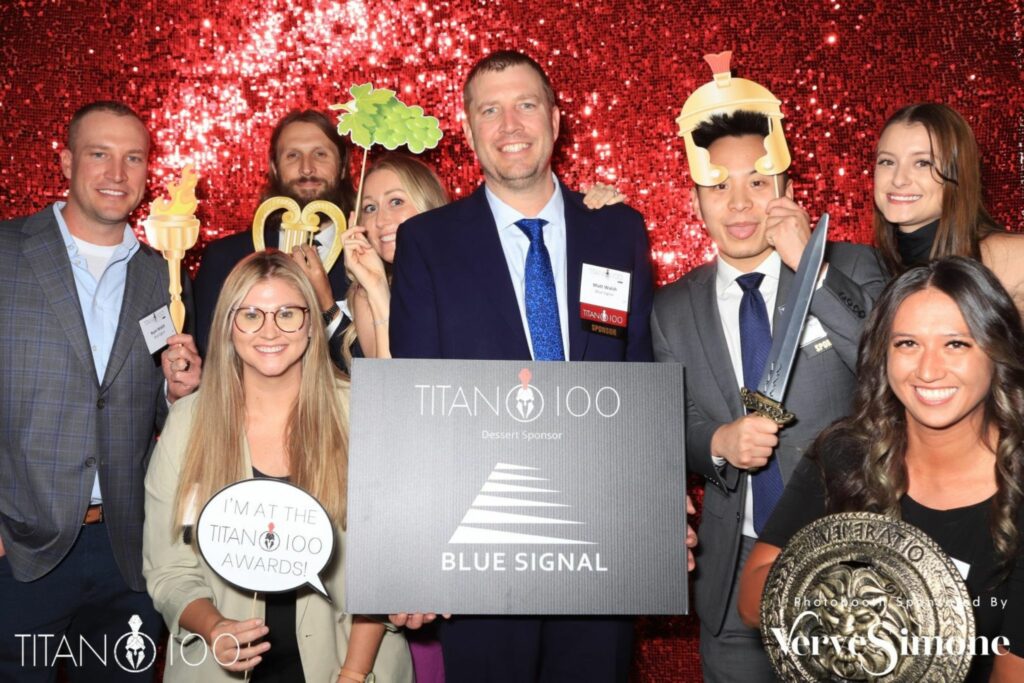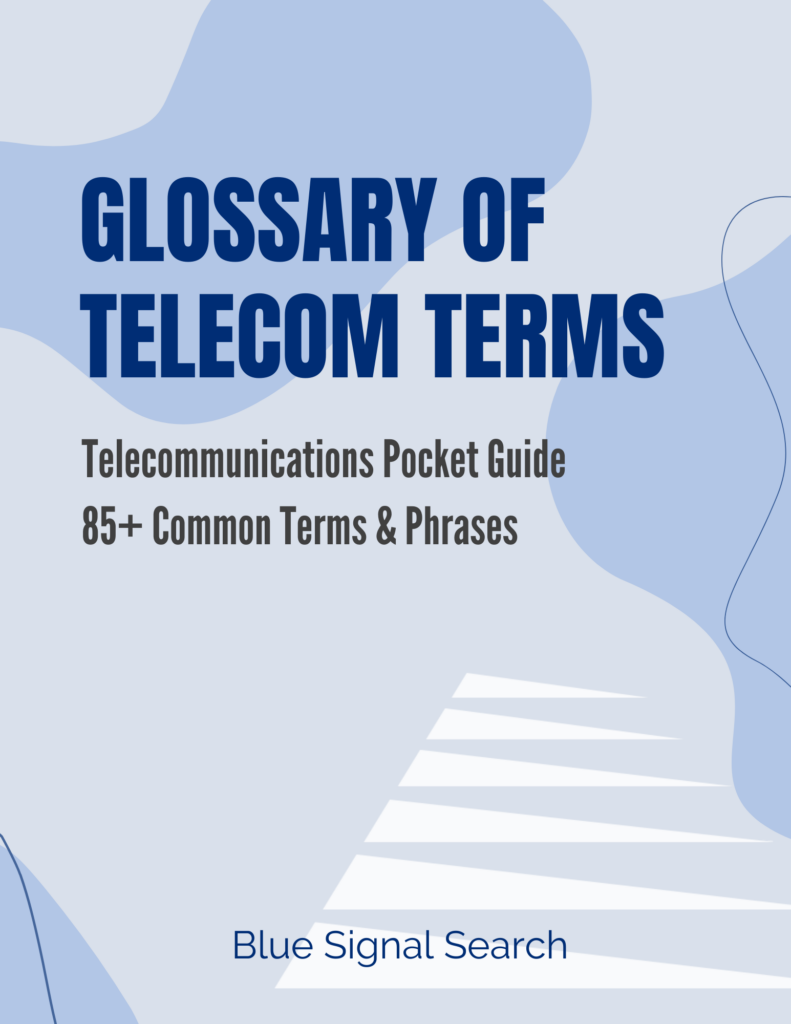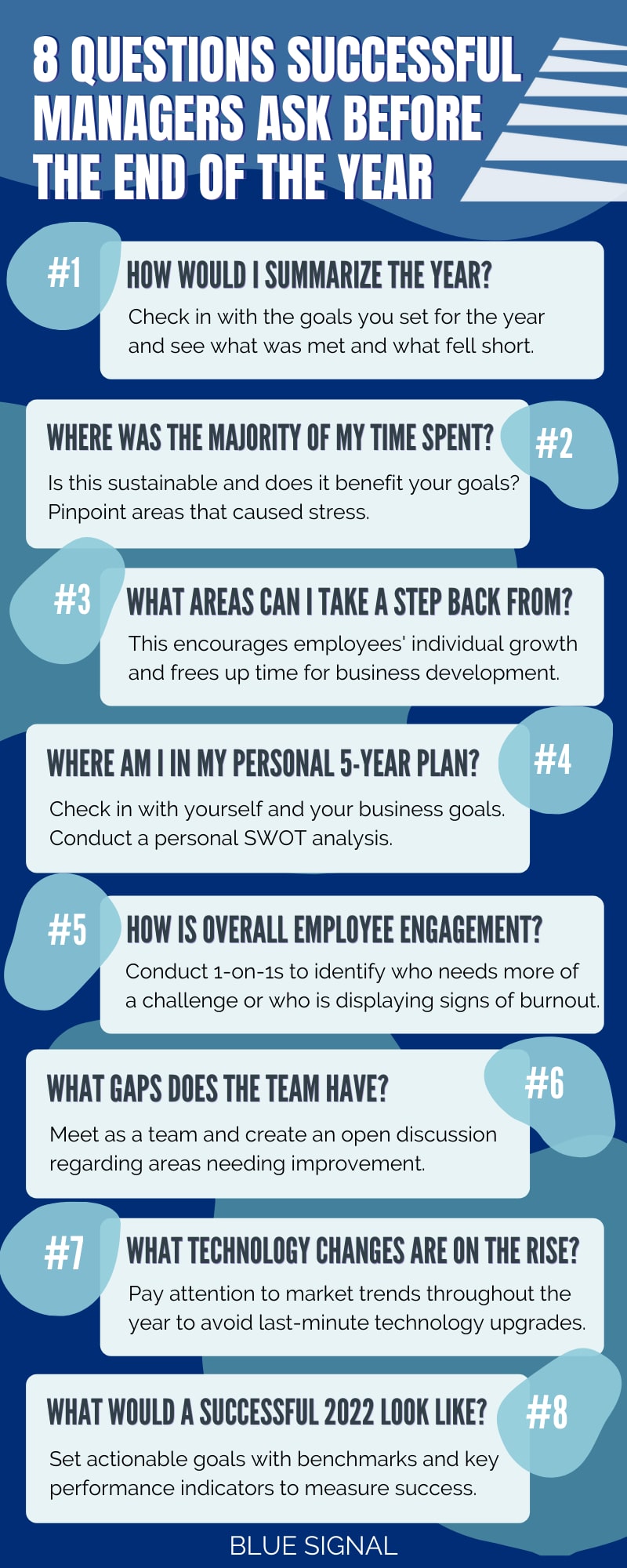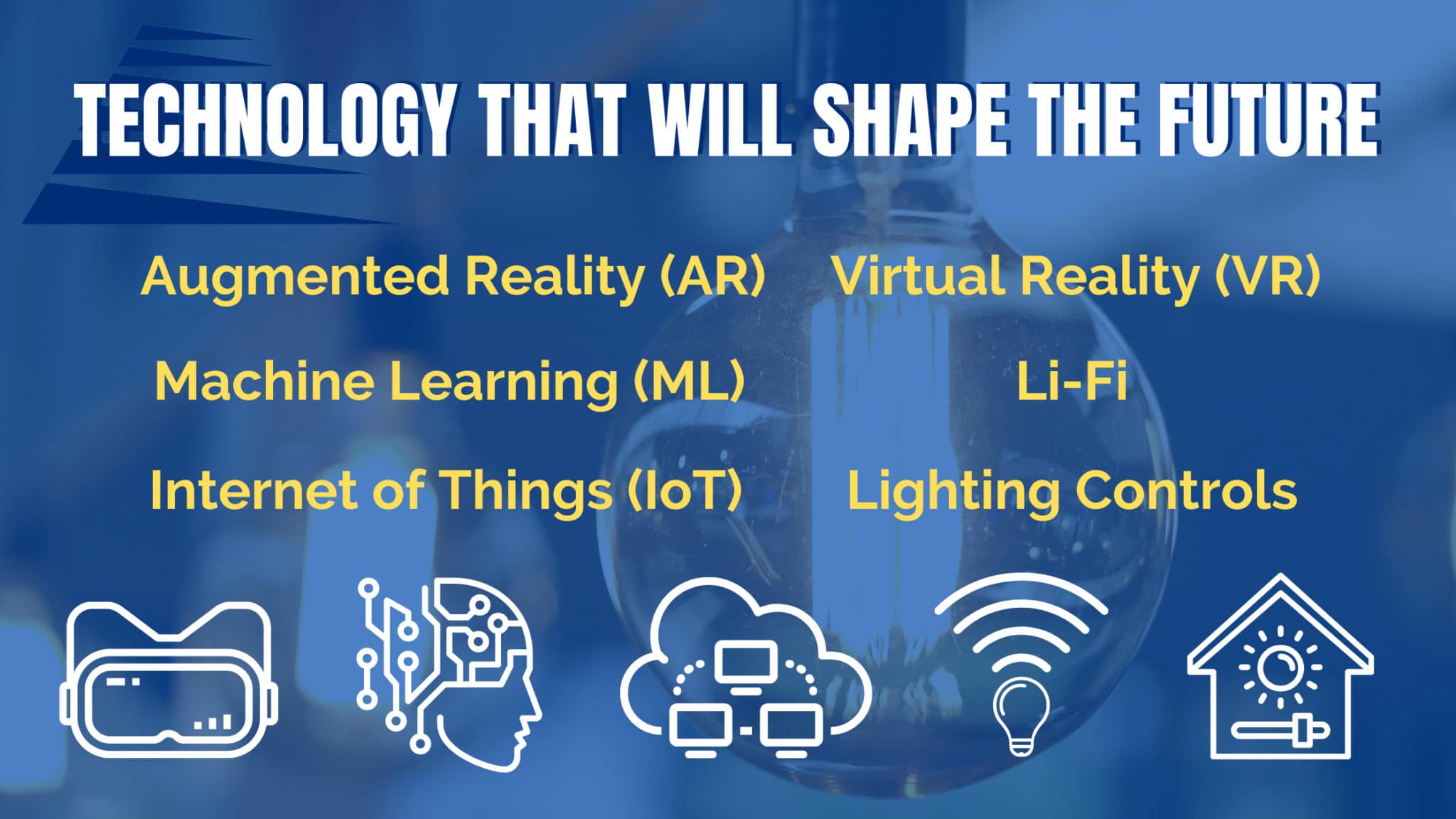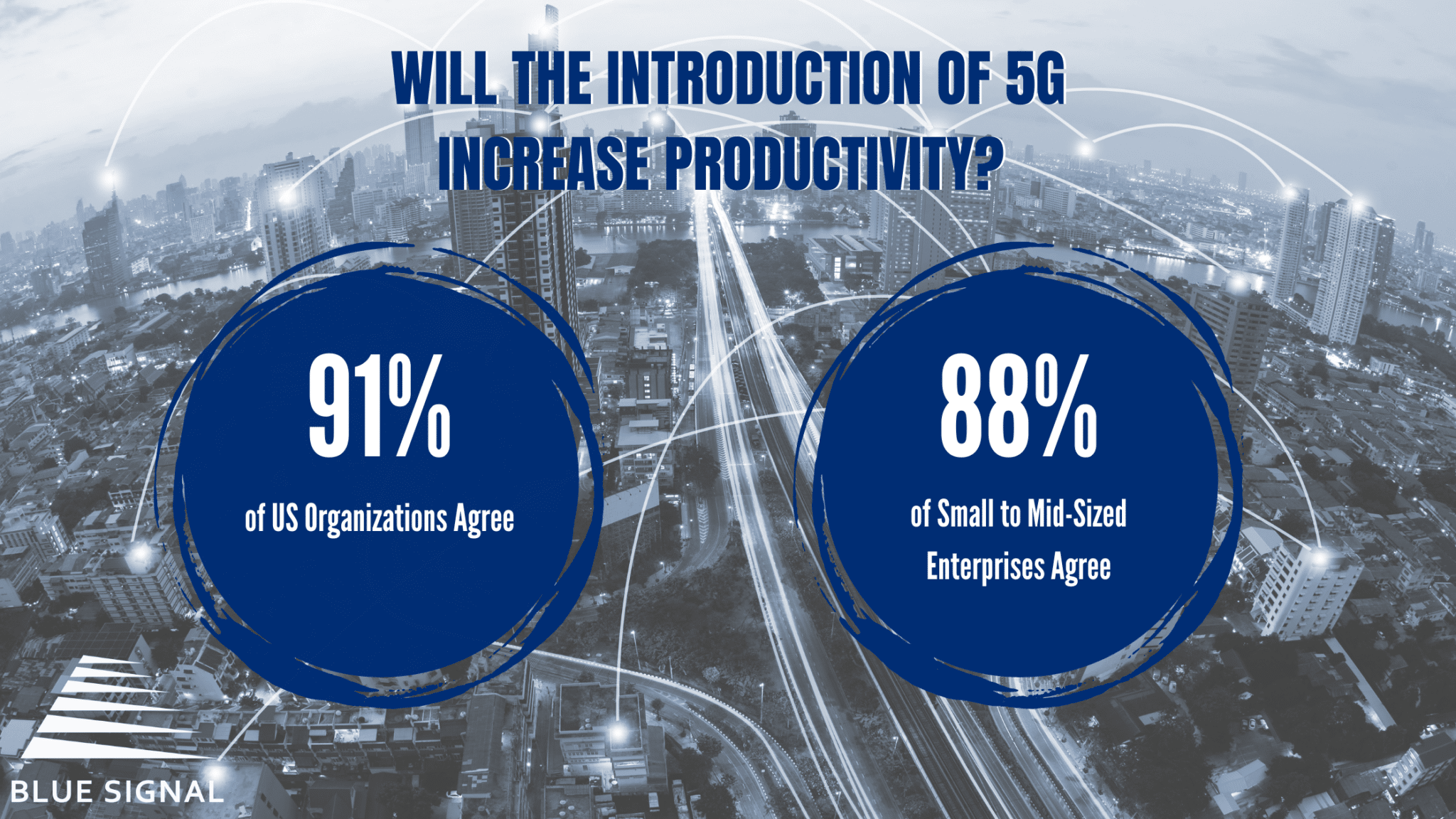Earlier this year, Blue Signal’s CEO Matt Walsh was named among 2023 Phoenix Titan 100, and was recently announced as a new member of the Phoenix Titan 100 Board of Directors. The Titan 100 program recognizes Phoenix’s top 100 CEOs and C-Level Executives. These leaders epitomize what it means to be a Titan through their “tenacity, vision, passion, and influence throughout Phoenix and beyond.” In celebration of the honorees, Phoenix Titan 100 hosted an awards ceremony at Desert Diamond Arena in Glendale on Thursday, August 24th, presented by Wipfli.
“These passionate and driven Titans of industry exemplify the true definition of leadership. We honor them for their unwavering commitment to building their businesses, shaping our communities, and making Phoenix a better place to work and live,” says Jaime Zawmon, President of Titan CEO.
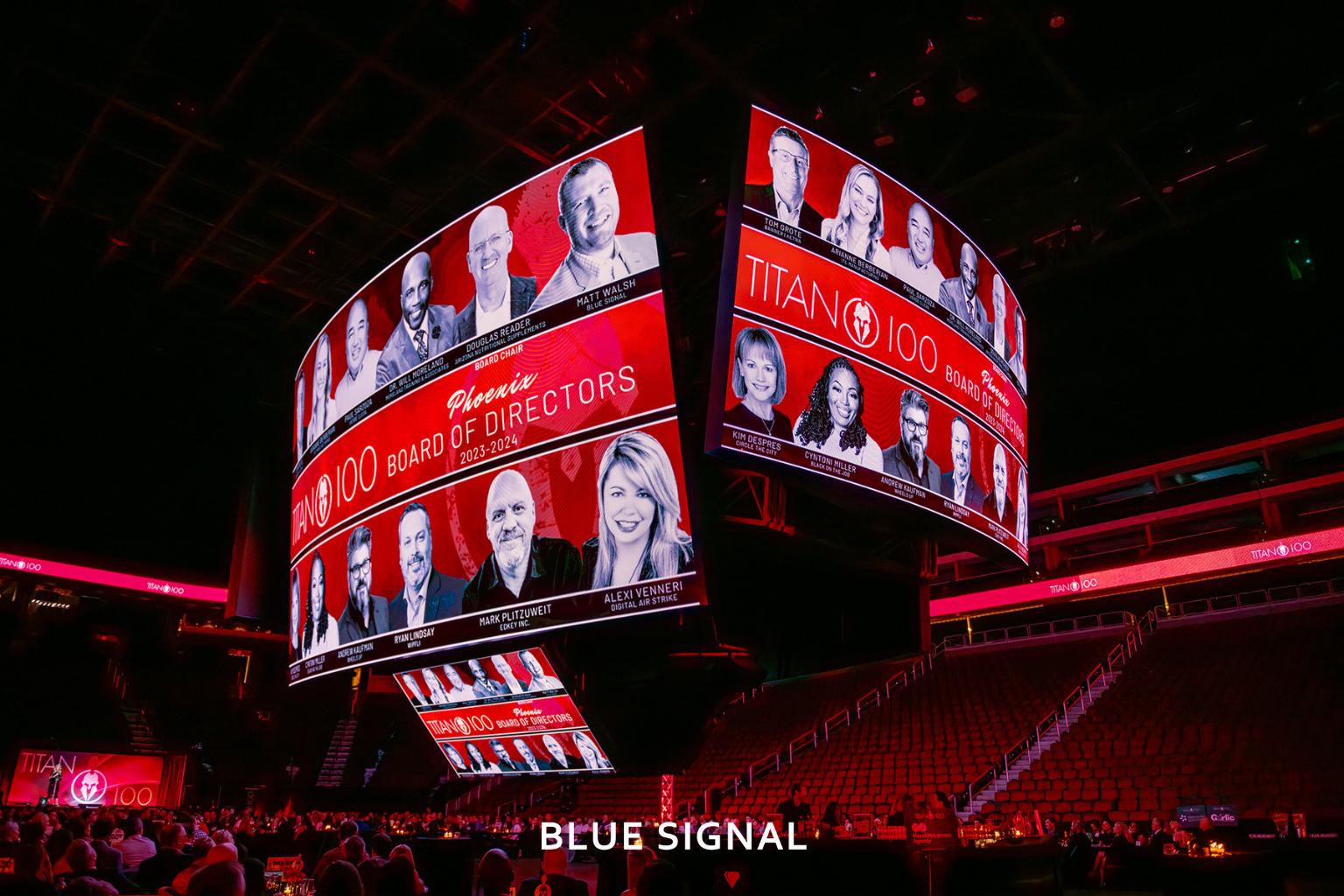
Blue Signal’s Titan, Matt Walsh
Matt Walsh, the founder and CEO of Blue Signal, has established a set of core values that underpin the company's culture since its inception in 2012. These values include doing the right thing, helping others, and being excellent. Additionally, he has set high ethical standards for the team regarding diversity, equity, and inclusion, with 100% of the workforce trained in these important subjects.
Matt's unwavering dedication to these core values has helped shape Blue Signal into a company that is recognized for its high ethical standards and commitment to excellence. His contributions have not only improved business operations in the local Phoenix community but have also impacted companies globally.

Under Matt's leadership, Blue Signal has become a leading executive search firm that prides itself on its reputation for excellence, transparency, and integrity. Matt's vision and leadership have been instrumental in driving the company's success, and this recognition as a 2023 Phoenix Titan 100 is a testament to his unwavering commitment to these values.
Blue Signal congratulates Matt Walsh on this prestigious recognition and looks forward to continuing to work alongside him as he leads the company to even greater heights.
Phoenix Titan 100 Ceremony


The Phoenix Titan 100 award ceremony recognized the area’s most accomplished business leaders in their industry using criteria that includes demonstrating exceptional leadership, vision, and passion. Over 500 guests joined Titan 100 to celebrate this elite group of CEOs and C-level executives that are changing the landscape of the Phoenix business community.
At the event, Titan honorees were presented with their Phoenix Titan 100 engraved award and copy of the Titan 100 book, an editorial collection highlighting all Titan 100 designees. Over refreshments and hors d’oeuvres, awardees were able to network and connect with fellow Titans. Guests could also indulge in a dessert table sponsored by Blue Signal. Our CEO, Matt Walsh, and other Blue Signalers thoroughly enjoyed the event and were honored to be among some incredible trailblazers in our community.
Thank you to Titan CEO & Titan 100, Wipfli, and all other sponsors for the incredible outing celebrating the best and brightest in our area. We left inspired, motivated, and ready to take on the rest of 2023!
About Blue Signal Search
Having successfully completed over 2,230 search projects, it’s no surprise Blue Signal has the experience, relationships, and tools to be recognized as a leader in the recruiting and staffing space. Additionally, our deep industry knowledge and streamlined search processes help clients to secure high-caliber talent within tight timeframes. As an award-winning, top executive search firm, we have been a driving force in our clients’ professional successes. Therefore, we immerse ourselves in our client’s businesses and our candidate’s careers to fully understand top priorities and the best direction for both parties. Our reputation is built on our ability to consistently incorporate these priorities into our executive hiring process to make long-term, impactful connections.

About Titan CEO & Titan 100
Titan CEO brings CEOs together through private events and roundtables. They also provide private, instructor-led peer groups for Titan CEO members. Held monthly, their CEO peer groups are designed to meet a CEO’s unique need as a business leader by facilitating curriculum that helps to build business valuation and tackle everyday business challenges. They offer a suite of resources including private coaching, high-level networking, and executive level retreats. Through their community, they aim to work with CEOs to help them connect and grow as Titans of the industry. Learn more at www.titan100.biz
About Wipfli LLP
At Wipfli, they're committed to providing industry-focused assurance, accounting, tax, and consulting services that make a lasting, positive impact on their clients — helping them overcome personal and business challenges and plan for future success. Wipfli ranks among the largest accounting and advisory firms in the nation, with more than 70,000 clients and 3,100 associates. They're proud to give their clients the value and experience of a diverse firm that specializes in a wide range of services and industries, dedicated to enduring results, outstanding service, and lifetime relationships. Learn more at wipfli.com.
Partner with us for your next hire.
Set up a free consultation with a recruiting manager. Tell us about your hiring need.
By submitting this form, you consent to receive communications from Blue Signal, including phone calls, emails, and text messages.
